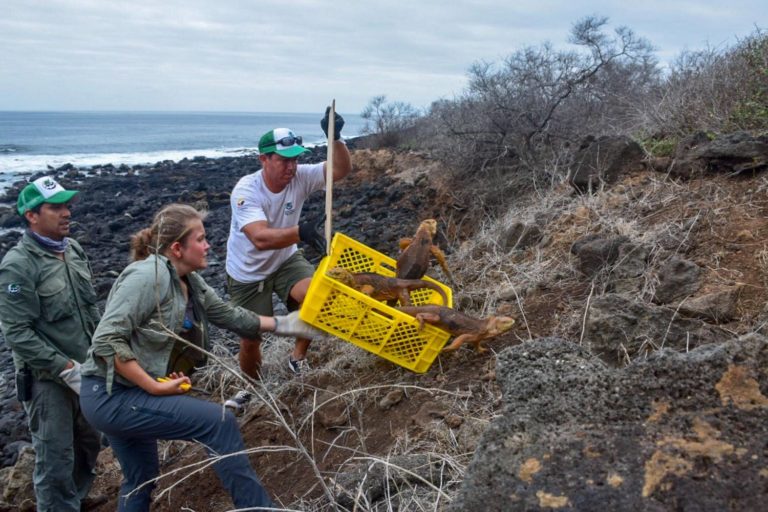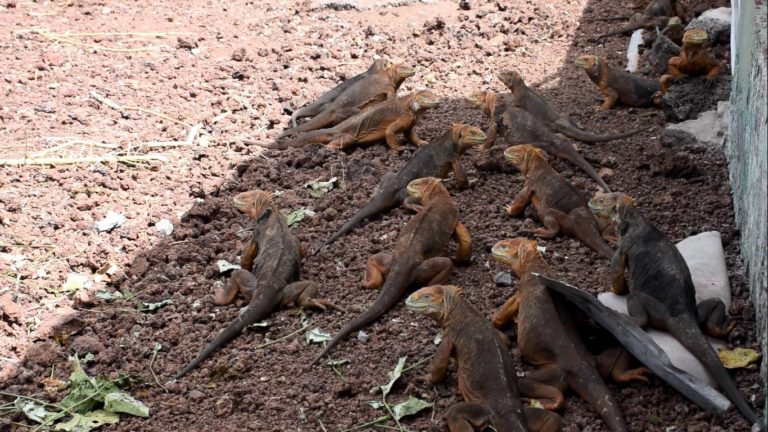In an effort to restore biodiversity to the Galapagos archipelago, 1,463 iguanas have been reintroduced to it, making this the first time the species has inhabited the Galapagos since disappearing from the islands nearly 20 years ago.
The Galapagos National Park moved the iguanas from Seymour north Island to their new home on Santiago Island in the Galapagos. The Massey University of New Zealand and the island conservation organisation worked together to bring these creatures to their new home.

Galapagos National Park/Facebook – transferring of the iguanas to the island
‘Almost two centuries later, this ecosystem will again have this species through this restoration initiative,’ said the park authority.
The last sighting of iguanas on the island were recorded in 1835 by British naturalist Charles Darwin. In order to ensure that the reintroduced members of the species thrived, they were released in the coastal areas of Port New and Buccanner, both of which have a similar ecosystem to their natural habitat.
Danny Rueda, the park’s ecosystems director, explains the reintroduction of the species will improve the island’s general ecosystem.
‘The earth iguana is a herbivore that helps ecosystems through the dispersal of seeds and the maintenance of open spaces without vegetation,’ he says.

Galapagos National Park/ Facebook – dispersing the iguanas
The Galapagos National Park released a statement that monitoring will continue into February.
‘The last stage of the project, which will start in February, includes monitoring the establishment of iguanas on the island (Adaptability); Reproduction (identification of nests); verification of biomass, i.e. identification of favorite plants to eat, And Collection of survival data, among others.’
An increasing depletion of suitable vegetation and food sources for the iguanas located on Seymour north was a secondary factor in prompting the move of these creatures to the Galapagos.

Galapagos National Park/Facebook iguanas relocated to island
‘This management measure will protect the population of land iguanas from Seymour north, estimated at 5,000 individuals, in light of the low availability of food.’
Director of the Galapagos National Park Jorge Carrión explains that iguana numbers initially declined due to the presence of ‘invasive species’, such as feral pigs.
Park authorities will establish a continued management of introduced species, such as ants and rodents, to protect the future nesting areas of iguanas on the island.
This is a big step in restoring the natural wildlife biodiversity of the island, which includes improving the vegetation and plant life.
Picture: Galapagos National Park/ Facebook
You may also like
Related Posts
The Arizona Game and Fish Department (AGFD) is counting the days until the eggs of...
read more
Jock Safari Lodge has formed an official long term partnership with the Wilderness Foundation Africa...
read more
A new campaign, designed to conserve South Africa's shark and ray populations, has been launched....
read more